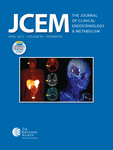JCEM:溃疡性结肠炎患者有更高的低骨矿密度患病率
2013-04-30 JCEM dxy
炎症性肠病的患者常常伴有低骨矿密度(BMD)。为了在溃疡性结肠炎(UC)的男性患者中间,评估低BMD(骨质疏松或低骨量)和脆性骨折的患病率和预测因子,来自美国新奥尔良市杜兰大学医学院的Nabeel Khan博士及其团队进行了一项研究,该研究发现男性UC患者低BMD患病率高于普通人群。该研究结果在线发表在2013年4月17日的美国《临床内分泌代谢杂志》(The journal of clinical
炎症性肠病的患者常常伴有低骨矿密度(BMD)。为了在溃疡性结肠炎(UC)的男性患者中间,评估低BMD(骨质疏松或低骨量)和脆性骨折的患病率和预测因子,来自美国新奥尔良市杜兰大学医学院的Nabeel Khan博士及其团队进行了一项研究,该研究发现男性UC患者低BMD患病率高于普通人群。该研究结果在线发表在2013年4月17日的美国《临床内分泌代谢杂志》(The journal of clinical endocrinology & metabolism)上。
该研究是一项回顾性的数据分析,在全国退伍军人(VA)医疗保健系统中进行。入选2001至2011年期间在VA系统随访的、使用ICD–9编码确认的男性UC患者。使用ICD–9编码确认患者伴有低BMD和脆性骨折。利用药物数据评估患者类固醇暴露情况。使用多元分析确定全身性类固醇对低BMD和脆性骨折风险的独立影响。
该研究结果表明,确认了34665例患者,在他们中间,31%使用类固醇。那些使用类固醇和没有使用类固醇患者中间低BMD患病率分别为15.8%和7.1%,P<0.001。那些伴有骨质疏松、低骨量和那些不伴有低BMD患者的脆性骨折患病率分别为7.9%、4.4%和1.1%,P<0.001。类固醇暴露显示剂量反应模型,在控制其他可能的预测因子后,与非类固醇使用者相比,强的松暴露累积大于11136mg(十等分)的患者更有可能发生低BMD(OR=8.9,P<0.001)和脆性骨折(OR=1.8,P<0.001)。
该研究发现,在这个全国性的队列中,低BMD的患病率高于普通男性人群报道的数据。类固醇使用的累积与低BMD风险之间密切相关。类固醇和低BMD是脆性骨折的独立危险因素。
与结肠炎相关的拓展阅读:
- Microbiome:新型标志物或可识别婴儿坏死性小肠结肠炎风险
- JPGN:粪便移植或可治疗溃疡性结肠炎
- APT:周末手术治疗溃疡性结肠炎增加并发症风险
- ALIMENT PHARM THERAP:他克莫司显示对难治性溃疡性结肠炎有短期疗效
- FDA批准Humira用于治疗某些溃疡性结肠炎患者 更多信息请点击:有关结肠炎更多资讯

Prevalence and Predictors of Low Bone Mineral Density in Males with Ulcerative Colitis.
Abstract
Context:Low bone mineral density (BMD) is common in patients with inflammatory bowel diseasesObjective:To assess the prevalence and the predictors of low BMD (osteoporosis or osteopenia) and fragility fractures among men with Ulcerative Colitis (UC).Design:Retrospective database analysis.Setting:Nationwide Veterans Affairs (VA) healthcare system.Patients:Male UC patients who were followed in the VA system between 2001 and 2011 were identified using ICD-9 codes.Main Outcome Measures:We identified patients with low BMD and fragility fractures using ICD-9 codes. Steroids exposure was assessed using pharmacy data. Multivariate analysis was used to identify the independent effect of systemic steroids on the risk of low BMD and fragility fractures.Results:We identified 34,665 patients. Among them, 31% used steroids. Prevalence of low BMD was 15.8% and 7.1% among those who used and did not use steroids respectively, p<0.001. Prevalence of fragility fractures was 7.9%, 4.4% and 1.1% for those with osteoporosis, osteopenia and those without low BMD respectively, p<0.001. Steroids exposure showed dose-response pattern, patients who had accumulative prednisone exposure of >11,136 mg (tenth decile) were more likely to develop low BMD (OR=8.9, p<0.001) and fragility fractures (OR=1.8, p<0.001) as compared to non-steroids users after controlling for other possible predictors.Conclusion:In this nationwide cohort, prevalence of low BMD was higher than what was reported for the general male population. There was a strong correlation between the cumulative steroid utilization and the risk of low BMD. Both Steroids and low BMD were independent risk factors for fragility fractures.
本网站所有内容来源注明为“梅斯医学”或“MedSci原创”的文字、图片和音视频资料,版权均属于梅斯医学所有。非经授权,任何媒体、网站或个人不得转载,授权转载时须注明来源为“梅斯医学”。其它来源的文章系转载文章,或“梅斯号”自媒体发布的文章,仅系出于传递更多信息之目的,本站仅负责审核内容合规,其内容不代表本站立场,本站不负责内容的准确性和版权。如果存在侵权、或不希望被转载的媒体或个人可与我们联系,我们将立即进行删除处理。
在此留言








#JCEM#
68
#溃疡性#
61
#JCE#
74
#患病率#
62